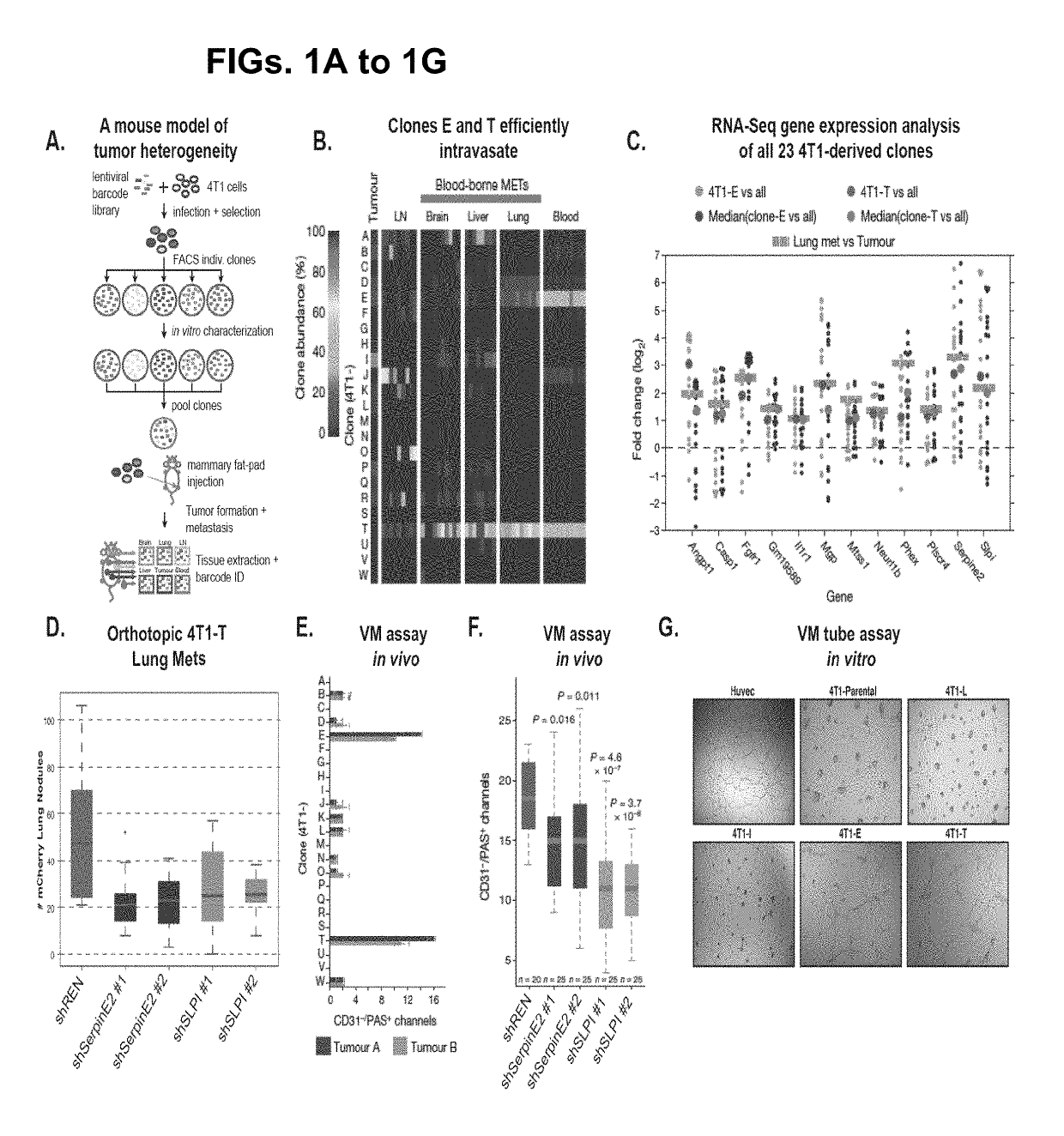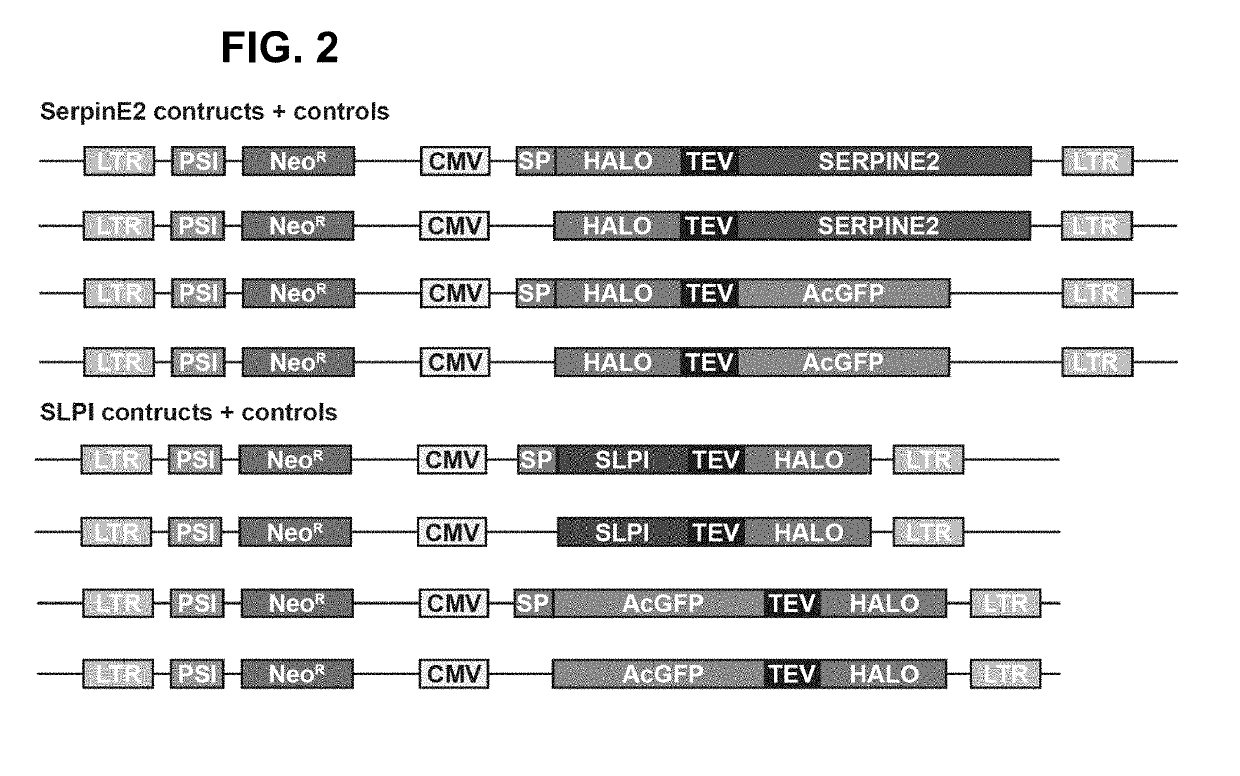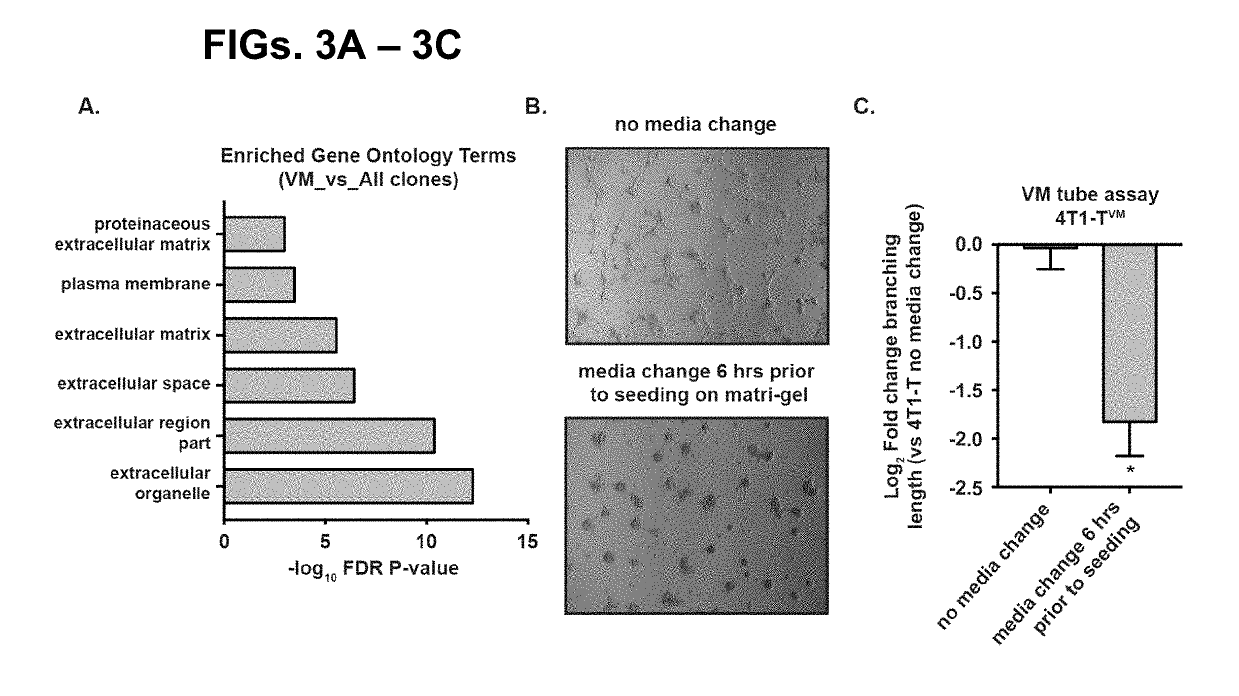Methods and compositions for targeting vascular mimicry
a technology of vascular mimicry and composition, which is applied in the direction of drug compositions, antibody medical ingredients, peptides, etc., can solve the problems of disappointing clinical trials of anti-angiogenic agents such as avastin®/bevacizumab (genentech), and the development of effective therapeutic interventions
- Summary
- Abstract
- Description
- Claims
- Application Information
AI Technical Summary
Benefits of technology
Problems solved by technology
Method used
Image
Examples
example 1
Methods and Materials—In Vivo Procedures
[0116]We endeavor to use non-animal model systems wherever possible, such as cell lines, in vitro and computational approaches, we are studying processes which are fundamentally related to interactions between the host and the tumor such as metastasis and response to therapy which require a whole organism to yield meaningful insights. Moreover, metastasis is a complex process which involves multiple hurdles that tumor cells must overcome to form occult secondary metastases such as invasion through the primary tumor, entry, and survival into the blood stream, exit from the blood stream and colonization at distant sites. Each of these steps is influenced by anatomical, immune, and environmental factors that only exist in an intact organism.
[0117]Mice are chosen for our experiments as they are the organism from which 4T1 cells were derived, facilitating transplantation into immune-competent hosts. Moreover, some drugs that we use in our studies s...
example 2
The Serine Protease Inhibitors Serpine2 and SLPI Regulate VM
[0121]Recently, using genetic tracking of clonal lineages derived from the same parental population (FIGS. 1A and 1B), we have identified sub-clones of breast cancer cells that are competent to perform VM (FIGS. 1E-1G)7. By comparing gene expression between VM-competent and incompetent sub-clones we identified several putative mediators of VM (FIG. 1C), two of which we functionally validated in vitro and in vivo (FIGS. 1F-G). Through manipulation of these novel VM mediators, SerpinE2 and SLPI, we discovered an essential role for VM in metastasis (FIG.1D) by facilitating tumor cell intravasation (entry into the bloodstream)7. These data not only established the importance of VM for metastasis but also identified and validated the first bona fide drivers of the VM phenotype. However, the targets through which SerpinE2 and SLPI act, the precise mechanisms through which otherwise epithelial cells differentiate into endothelial-...
example 3
Mechanistic Dissection of an Ire1-Restrained Secretory Program that is Essential for VM
[0129]To understand the mechanistic details of how IRE1 restrains VM, we use CLIP to define direct IRE1-target mRNAs, motifs, and nucleotide-resolution binding sites. We then assay the newly defined target genes for their impact on VM and metastasis and determine how these effects are exerted.
[0130]Our preliminary data indicate that VM clones up-regulate the expression of many genes encoding secreted extra-cellular factors (FIG. 3A) such as ECM (extra-cellular matrix) and ECM regulatory proteins. By performing experiments where we simply exchange the medium on VM clones prior to replating the cells on Matrigel, thus depriving the cells of high concentrations of cell-derived secreted factors, we have shown that VM clones broadly require secretion of extra-cellular factors to maintain their ability to form VM tubes in vitro (FIG. 3B-C). Given this striking result and the documented ECM-richness of V...
PUM
| Property | Measurement | Unit |
|---|---|---|
| Composition | aaaaa | aaaaa |
| Refractory | aaaaa | aaaaa |
Abstract
Description
Claims
Application Information
 Login to View More
Login to View More - R&D
- Intellectual Property
- Life Sciences
- Materials
- Tech Scout
- Unparalleled Data Quality
- Higher Quality Content
- 60% Fewer Hallucinations
Browse by: Latest US Patents, China's latest patents, Technical Efficacy Thesaurus, Application Domain, Technology Topic, Popular Technical Reports.
© 2025 PatSnap. All rights reserved.Legal|Privacy policy|Modern Slavery Act Transparency Statement|Sitemap|About US| Contact US: help@patsnap.com



